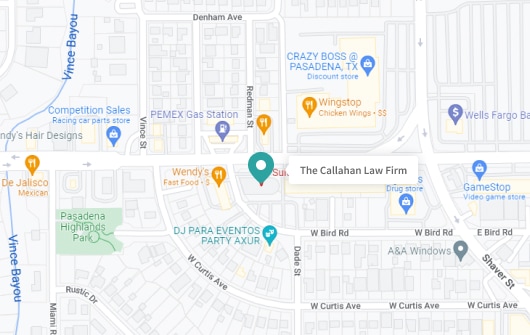Natural Gas Wells Present Danger to Workers and Area Residents
The Barnett Shale and Eagle Ford Shale regions in Texas are heavily exploited for natural gas that exists deep within the rock. The process used to extract natural gas is dangerous for workers and may be hazardous to nearby residents and the environment. Read about private well contamination linked to Barnett Shale exploration and confirmation of air contamination in Texas.
Natural Gas Extraction
Natural gas in Shale regions is extracted using a process called hydraulic fracturing, commonly called “fracking”. In the fracking process, millions of gallons of a mixture of water, sand, and chemicals are forced underground at high pressure. The fracking fluid breaks up the rock and creates tunnels through which natural gas can more freely escape.
A study by the New York City Department of Environmental Protection found that fracturing a single natural gas well could involve three to eight million gallons of water and 80 to 300 tons of chemicals. The study also reported that about half of the fracturing fluid flows back to the surface as natural gas rises up the well.
Fracking Fluid Hazards
According to the New York City study, the fluid that comes back up the well consists of hydrocarbons, residue from the shale formation, and chemicals used in the fracking process. Conventional wastewater treatment is not feasible, so the fluid is hauled away by truck.
The fracking fluid contains neurotoxins and carcinogens such as ethylene glycol and glutaraldehyde. Many people fear these chemicals seep into the surrounding earth, contaminating underground aquifers and are not properly contained at drill sites, polluting watersheds that provide drinking water for nearby residents.
Transportation Dangers
In addition to the potential chemical problems associated with the fracking process, transportation and trucking issues also present danger to workers at natural gas well sites. According to the Centers for Disease Control and Prevention (CDC), highway motor vehicle crashes accounted for 27 percent of the fatal injuries suffered by oil and gas extraction workers in the United States during 2003-2006.
The New York City study estimated that 1,000 or more trips are required for trucks hauling fracking fluid to and from each well site. In addition, vehicles used in oil and gas extraction are exempt from certain United States Department of Transportation hours-of-service regulations.
The CDC reports that truck drivers and workers in personal automobiles frequently travel long distances between well sites on rural highways that lack firm road shoulders, rumble strips, and, occasionally, pavement. Because workers often are on 8- to 12-hour shifts and work 7 to 14 days in a row, fatigue is a significant risk factor in trucking and transportation accidents among gas extraction workers.
If you have been injured while working at a gas well site, while working in the gas exploration industry or believe your water may be contaminated, contact an experienced personal injury lawyer to discuss any legal claims you may have.

Michael S Callahan is an attorney and founder of The Callahan Law Firm. He focuses his practice on representing individuals and families in personal injury cases involving motor vehicle and truck accidents, workplace accidents and defective products. With over 25 years of experience, he is dedicated to fighting on behalf of people whose lives have been forever altered by the negligence and carelessness of corporations and individuals. Originally trained as a mechanical engineer, Michael has been practicing law and fighting for justice for those who need it most since 1994. He is board-certified in Personal Injury Trial Law by the Texas Board of Legal Specialization and a member of various esteemed legal associations. Outside of work, Michael enjoys spending quality time with his family, outdoor activities, and continually striving to improve as a trial lawyer and human being.











